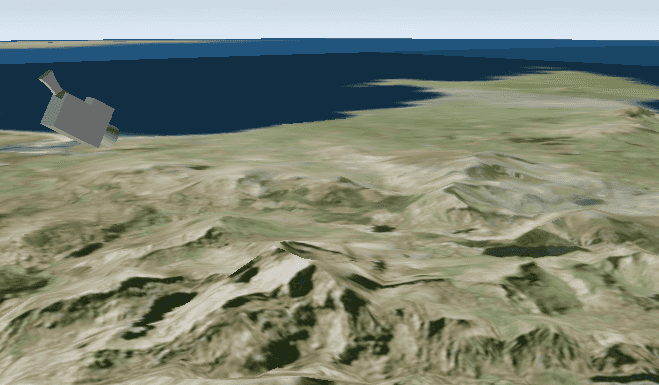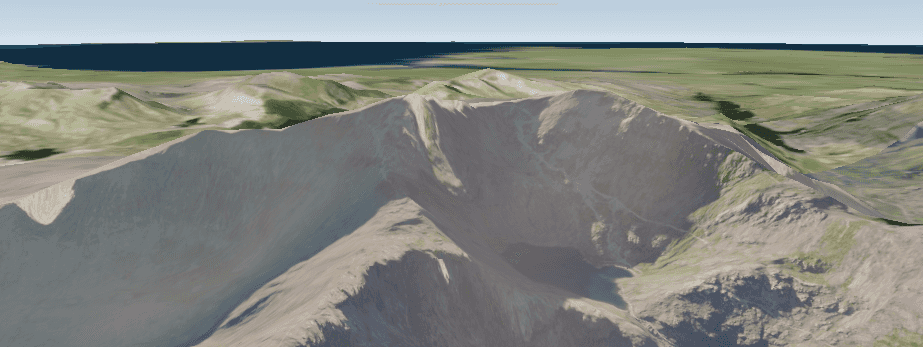You can navigate a scene view (a 3D map):
- Using built-in navigation (described on this page), such as panning, zooming, and changing pitch
- By programmatically changing camera position
Built-in navigation
The scene view has a number of built-in gestures that allow you to navigate a scene (3D) using the mouse or touch screen.
Basic navigation
Basic navigation for scene views is the same as navigation for map views:
| Navigation | Mouse | Touch |
|---|---|---|
| Pan | • Hold left button and drag | • Drag 
• Flick 
|
| Zoom in | • Scroll wheel forward • Hold center button and drag | • Spread 
|
| Zoom out | • Scroll wheel backward • Hold center button and drag | • Pinch 
|
| Rotate | • Hold right button and drag | • Multiple finger hold and twist 
|
Advanced navigation
Scene views have additional navigation not found in map views:
| Navigation | Mouse | Touch |
|---|---|---|
| Change pitch | N/A | • Multiple fingers drag up/down 
|
| Change heading | N/A | • Multiple fingers drag left/right 
|
Navigate with touch
Navigating a scene view on a touch screen warrants some additional details.
There are three navigation modes available using touch: pan mode (single finger), zoom and pan mode (multiple finger), and rotate and pitch mode (multiple finger). For single finger pan, place one finger on the screen. For pan and zoom mode, spread, pinch, or drag two or more fingers. For heading and pitch mode, place multiple fingers on the screen and move with a consistent distance between your fingers. The following list describes the touch gestures used to execute navigation operations in each mode.
- Pan mode (single finger)
- Drag: Pans
- Flick: Pans
- Pan and zoom mode (multiple fingers)
- Spread: Zooms in
- Pinch: Zooms out
- Drag: Pans
- Pivot: Rotates
- Heading and pitch mode (multiple fingers)
- Drag up and down: Changes pitch
- Drag left and right: Changes heading
Programmatically change camera position
Your applications can programmatically navigate a 3D scene by creating a new camera and setting it to the scene view. A camera defines the location from which you are viewing the scene.

The camera is shown in this image for illustration purposes; when you set camera settings (location, pitch), think of the camera class a real-life camera you're adjusting the position of.
Set the camera
For example, to point the camera to toward the Snowdon mountainside, as shown in the following code snippet and image, use these values:
- For 3D location, use 53.06 latitude, -4.04 longitude, 1289 meters above sea level
- For heading, use 295 degrees
- For pitch, use 71 degrees
- For roll, use 0 degrees
var snowdonCamera = new Camera(53.06, -4.04, 3289, 295, 71, 0);

Now you have a new camera you can apply to your scene view. You can apply it immediately using Set as shown in the code below, or the camera can be animated to the new position using one of the asynchronous methods.
MySceneView.SetViewpointCamera(snowdonCamera);